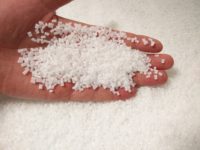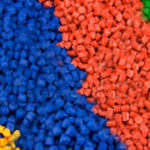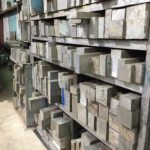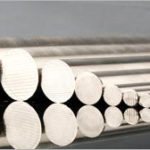When creating a part, one of the most important decisions a design engineer must face is what type of material to use. Material selection will determine a great deal about the functionality and appearance of a given component, as well as how well it will hold up over time.
In the past, material options were fairly limited, but in today’s manufacturing environment, the list of available materials can seem endless. New metals and plastics are hitting the market each week, all touting unique benefits in form and function. Because of the daunting array of materials available to designers and engineers, let us discuss some of the most popular varieties used today.
Machining Plastics
Plastics are continuing to grow in popularity. They are light-weight, easy to machine, and are often less expensive than their metal counterparts. Machining plastics come in an endless variety, all with their own strengths and weaknesses. Plastics should be used for light-weight applications and prototyping.
Some of the most common types of plastics used in machining can be found below.
ABS Plastics

Acrylonitrile Butadiene Styrene, often abbreviated ABS, is the plastic used in most LEGO toys. This versatile plastic is a well-rounded option that offers high impact strength and toughness relative to its cost. ABS is easy to machine, heat resistant, and lends itself well to finishing (glue, paint, polish, etc.) It is often used in prototyping a part’s functionality prior to mass production.
Nylon
Similar to ABS, Nylon is a robust plastic that performs well in a variety of environments. It is heat and chemical resistant and maintains strength and rigidity in both hot and cold climates. Nylon machines well, but is prone to moisture absorption and warping which can pose challenges when tight dimensional tolerances are required.
Acrylic
Acrylic is also often referred to as Plexiglass. This clear plastic is an inexpensive option for any application that requires a “see-through” component. It can easily be glued and is relatively scratch resistance, but Acrylic does is not as strong as other plastics and will crack or break under too much pressure. Machined Acrylic will also lose its transparency, and would require secondary polishing processes to regain this property.
Delrin
Delrin is a form of Acetal. It is considered the most economic plastic due to its low cost and excellent machinability. Delrin is not prone to moisture absorption and maintains stiffness in a wide range of temperatures which increases its dimensional stability. Delrin has a slippery surface which reduces friction. This is a benefit in certain applications, but it makes it hard to glue/finish in secondary operations.
HDPE

HDPE (high-density polyethylene) is a thermoplastic with a high strength-to-weight ratio. HDPE offers high chemical resistance, electrical insulation, and durability in adverse weather conditions. Similar to Delrin, HDPE has a slippery surface that limits friction and holds up well to high impacts. This plastic is used in outdoor applications, as well as prototyping due to its low cost and weight.
Polycarbonate
Polycarbonate is one of the more durable plastics on the market. This is a tough and rigid material that machines well and holds up better than ABS to high impact. It is generally clear/translucent but can be dyed or colored. Polycarbonate is prone to scratches but can be applied with protective coating to improve wear resistance.
Machining Metals
When strength and toughness are critical to a part’s function, metals are the way to go. Machining metals hold up far better to adverse conditions, making them a more reliable option than their plastic counterparts.
When considering which metal is right for your job, it is important to take into account factors like hardness, machinability, chemical/temperature resistance, overall weight, etc. These characteristics will all play a part in how a part is manufactured, and how well it will hold up in the field.
Below, you will find a list of some of the most popular types of metal used in manufacturing today.
Aluminum

Aluminum is one of the most common machining metals. It is widely available and comes at a lower cost than many other materials. Aluminum has an excellent strength-to-weight ratio. It machines quickly and maintains dimensional accuracy. It can be anodized for surface coloring and added wear resistance. Aluminum comes in a wide variety of alloys, 6061 being the most commonly used in manufacturing.
Brass
Brass is a stable, low-strength metal that is extremely machinable and has good electrical conductivity. It is non-magnetic, highly corrosion resistant and maintains a low friction coefficient. Brass is often used in plumbing applications for fittings and bearings.
Copper
Copper is one of the most conductive materials available and is most commonly used in electronics. It can be challenging to machine and comes at a higher cost, but Copper is highly corrosion-resistant (unlikely to rust) and has high thermal conductivity, making it an ideal choice for automotive components.
Mild Steel

Mild steels (1018, 1215, A36, A572, etc.) are the go-to metal when you need strength and durability without breaking the bank. These metals are inexpensive and highly machinable. They can be cut, formed, welded, rolled, making them an excellent option for a wide range of applications. Mild steels are not corrosion-resistant and will rust if exposed to the elements.
Stainless Steel
Stainless steel is a more expensive option but comes with added benefits that make it worth the price tag in many applications. Stainless steel comes in a variety of alloys. It is extremely strong, relatively easy to machine and can easily be formed and welded. Most stainless steels are non-magnetic and are extremely corrosion-resistant (though they can rust over time depending on their environment.)
Titanium
Titanium is an extremely high-strength, lightweight and corrosion-resistant metal. It is commonly used in aerospace, medical and automotive components, and is an ideal material when trying to limit weight without sacrificing structural integrity.
